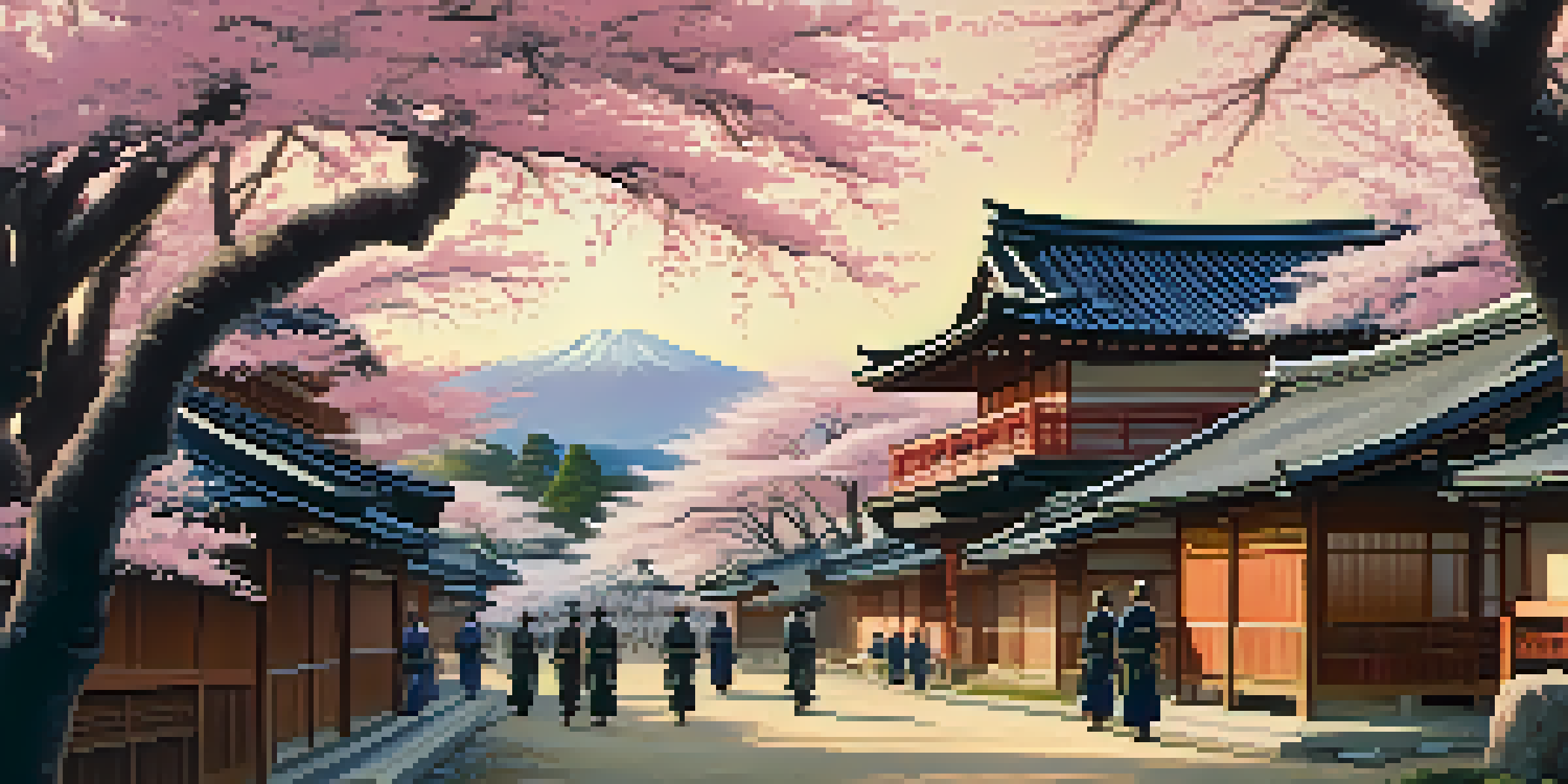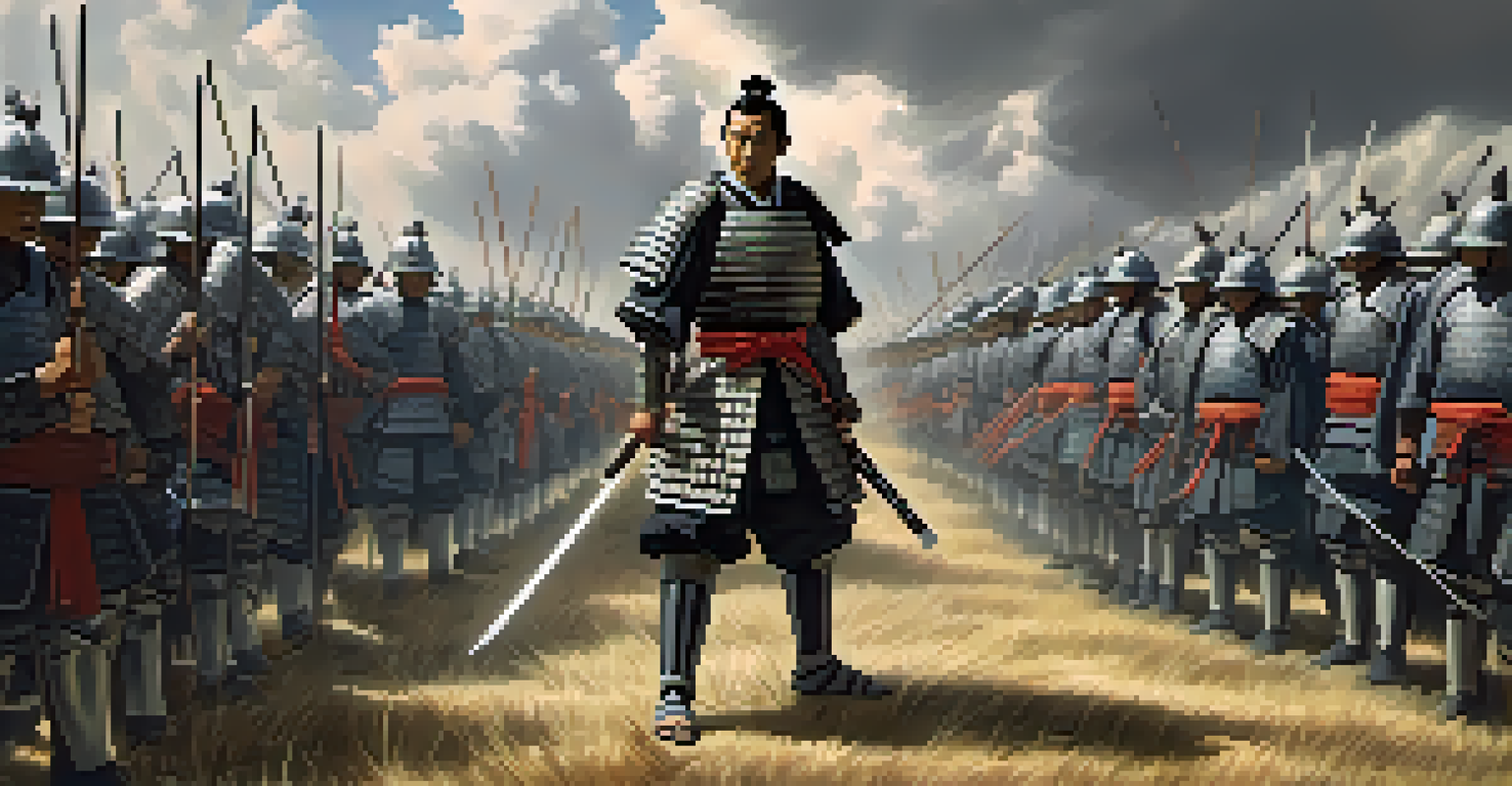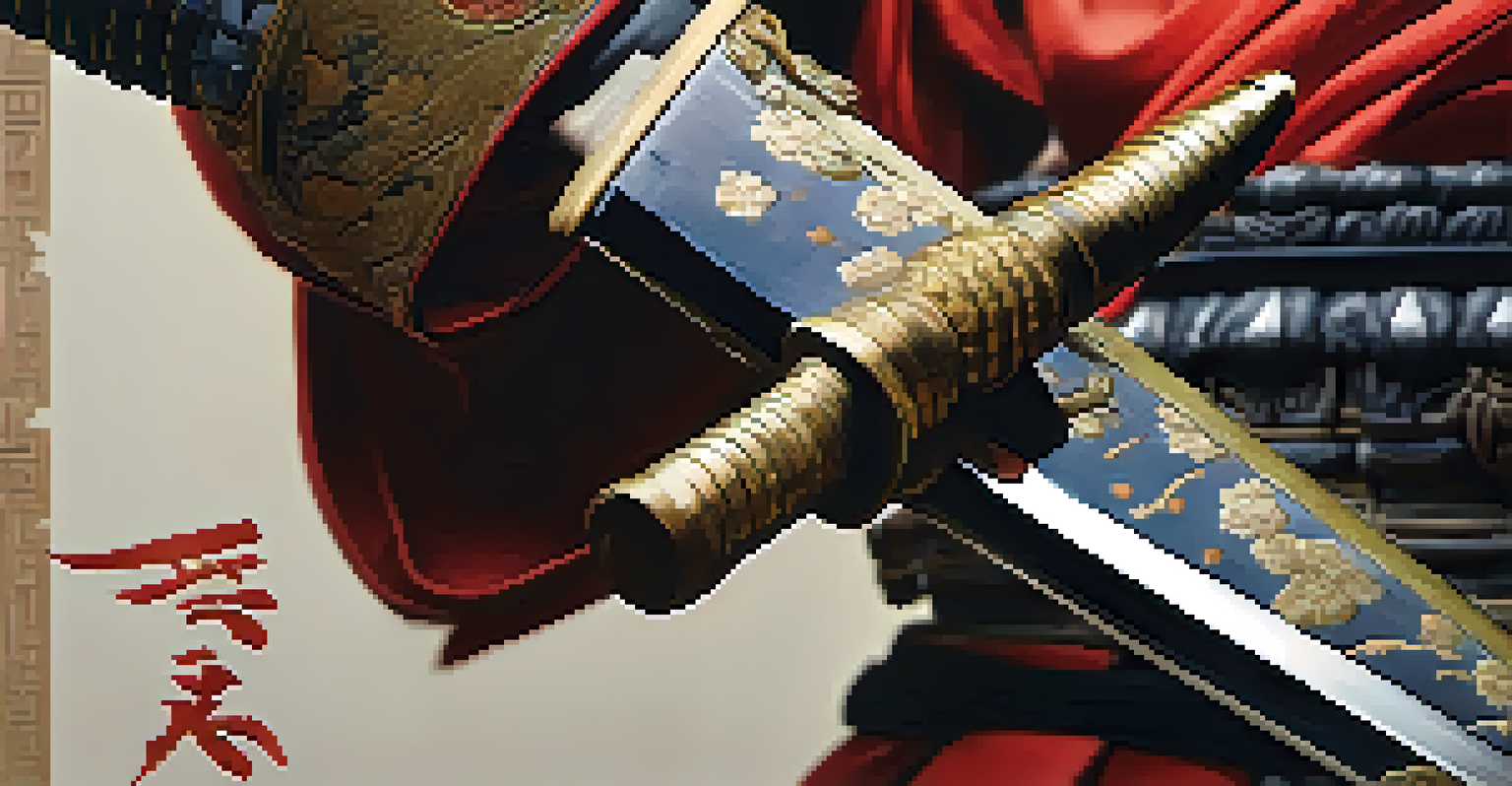The Real Story Behind 'The Last Samurai' and Its Historical Basis

Understanding the Film's Premise and Setting
Released in 2003, 'The Last Samurai' captures the clash between traditional Japanese culture and Western modernization. The film's narrative revolves around an American military advisor, Nathan Algren, who is drawn into the conflict of samurai warriors fighting against imperial forces. Set during the Meiji Restoration in the late 19th century, it paints a vivid picture of a transformative era in Japan's history.
The warrior's code is not a set of rules; it is a way of life.
The dramatic backdrop serves as a canvas for exploring themes of honor, loyalty, and cultural identity. As Algren immerses himself in the samurai way of life, viewers witness the poignant struggle between preserving ancient traditions and embracing change. This tension is not just fictional; it resonates with Japan's actual historical journey during this period.
While the film is a work of fiction, it raises questions about the real-life figures and events that inspired its narrative. This blend of fact and fiction invites audiences to delve deeper into the historical context of the samurai and their role in a rapidly modernizing society.
The Historical Context of the Meiji Restoration
The Meiji Restoration, which began in 1868, was a pivotal moment in Japanese history. It marked the end of the Tokugawa shogunate and the restoration of imperial rule, leading to significant social, political, and economic changes. This era saw Japan adopting Western technologies and practices, fundamentally transforming its society.

During this time, the samurai class, once the elite warrior caste, found themselves in a rapidly changing world. As the new government sought to modernize the military and eliminate the feudal system, the samurai struggled to maintain their status and relevance. This tension set the stage for conflict, as traditionalists resisted the wave of modernization.
Clash of Cultures in 'The Last Samurai'
'The Last Samurai' explores the tension between traditional Japanese values and Western modernization during the Meiji Restoration.
The film encapsulates this historical upheaval, showcasing the samurai's fight to protect their way of life. By weaving historical events into its storyline, 'The Last Samurai' highlights the complexity of this transitional period, encouraging audiences to appreciate the multifaceted nature of Japan's evolution.
The Character of Nathan Algren: Fiction vs. Reality
Nathan Algren, portrayed by Tom Cruise, serves as the film's central character, combining elements of multiple historical figures. One of the primary inspirations for Algren is the real-life American soldier and adventurer, Frederick Townsend Ward, who played a role in the Taiping Rebellion in China. However, Algren’s character is largely a fictional creation, designed to embody the Western perspective during this transitional period.
In the midst of chaos, there is also opportunity.
Algren's journey from a disillusioned soldier to a protector of samurai culture symbolizes the broader theme of finding honor in a changing world. While his story is compelling, it simplifies the complex dynamics of the era and the true experiences of those who lived it. By focusing on a single outsider's perspective, the film risks overshadowing the voices of the actual samurai.
This narrative choice invites viewers to question the authenticity of the representation while still engaging with the emotional core of the story. Ultimately, Algren's character serves as a vehicle for exploring the values of loyalty and honor, even if his journey is not entirely reflective of historical reality.
The Role of Samurai in Japanese Society
Samurai were not just warriors; they were also members of a complex social class with a rich cultural heritage. Renowned for their skills in combat and martial arts, samurai adhered to a strict code of conduct known as bushido, which emphasized honor, loyalty, and discipline. This code influenced not only their behavior in battle but also their personal and social lives.
As Japan transitioned into a modern state, the role of samurai began to diminish, leading to significant social upheaval. Many samurai found themselves without purpose in a world that no longer required their services as warriors. This loss of status contributed to the conflicts depicted in the film, as samurai grappled with their identity in a rapidly changing society.
Nathan Algren: A Symbolic Journey
The character of Nathan Algren embodies the Western perspective on honor and loyalty amidst Japan's cultural upheaval.
The film's portrayal of samurai culture, while stylized, succeeds in highlighting the essence of their values and the deep sense of honor they held. By showcasing their struggles, 'The Last Samurai' encourages viewers to appreciate the complexity of samurai life and the challenges they faced during this transformative period.
Cultural Depictions: Western vs. Japanese Perspectives
One of the most intriguing aspects of 'The Last Samurai' is how it bridges cultural divides, offering both Western and Japanese perspectives. From a Western viewpoint, the film romanticizes the samurai ethos, portraying them as noble warriors fighting against an encroaching modernization that threatens their way of life. This lens often simplifies the nuanced realities of the samurai experience.
Conversely, Japanese audiences may view the film with a sense of nostalgia for a bygone era, recognizing the samurai's sacrifices as emblematic of a cultural legacy. However, there is also a critique within Japan regarding the film's portrayal of samurai as needing a Western savior, represented by Algren. This duality invites a deeper conversation about cultural representation and the complexities of historical narratives.
Ultimately, 'The Last Samurai' serves as a cultural artifact that reflects both admiration and critique. It highlights the challenges of depicting historical events through a lens shaped by modern sensibilities, encouraging audiences to think critically about how cultures are represented in film.
The Impact of 'The Last Samurai' on Popular Culture
'The Last Samurai' made a significant impact on popular culture, igniting interest in samurai history and Japanese culture among global audiences. The film's visuals, action sequences, and emotional depth captivated viewers, fostering a renewed appreciation for the samurai as iconic figures. This fascination led to a surge in interest regarding Japan's rich history and traditions.
Moreover, the film's success prompted discussions about the accuracy of historical portrayals in media. Educators and historians began to use cinematic narratives as entry points for exploring deeper historical truths, encouraging audiences to engage with the realities behind the fiction. This engagement helped bridge the gap between entertainment and education.
Cultural Legacy of the Samurai
The film highlights the samurai's rich heritage and the complexities of their identity during a transformative period in Japanese history.
While 'The Last Samurai' remains a dramatized interpretation of history, its cultural impact is undeniable. It has played a role in shaping perceptions of Japan and its past, fostering curiosity and dialogue about the samurai era and the complexities of cultural exchange.
Lessons from 'The Last Samurai' and Its Historical Basis
At its core, 'The Last Samurai' offers valuable lessons about honor, loyalty, and the struggle between tradition and progress. As audiences follow Algren's journey, they witness the importance of understanding and respecting different cultures, especially during periods of change. This theme resonates not only in Japan's history but in contemporary society as well.
The film encourages viewers to reflect on their own cultural narratives and the ways in which they intersect with others. By examining the complexities of identity and the challenges of modernization, 'The Last Samurai' serves as a reminder of the importance of dialogue and understanding in an increasingly interconnected world.

Ultimately, the film stands as a testament to the enduring legacy of the samurai and the cultural values they represented. While it may take creative liberties, it invites audiences to engage with history, fostering appreciation for the intricate tapestry of human experience that shapes our world today.